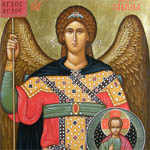Learn more about PHP programming utilizing the latest HTML 5, CSS, JavaScript and jQuery design techniques






From the Mayor of St. Petersburg
History of the Alexander Palace


Foreward
Tsarskoe Selo - "the Tsar's Village" - was the home of Russian Emperors and Empresses from Peter the Great in the eighteenth century to Nicholas II at the dawn of the twentieth. In its scale, opulence, and historical significance, this collection of palaces and park lands outside St. Petersburg stands alongside Paris' Versailles, Vienna's Schonbrunn, and Berlin's Sanssouci as one of the world's great cultural landscapes. Its centerpiece, the magnificent_ Catherine Palace, with its gilded domes, majestic halls, and ornate rococo decoration, vividly symbolizes the grand and tragic history of Russia and attracts millions of visitors annually from around the world.
As the Catherine Palace evokes Russia's eighteenth century grandeur, its neighbor, the stately neoclassical Alexander Palace, recalls the empire's final tumultuous century. Commissioned by Catherine the Great for her grandson, the future Alexander I. the Alexander Palace was the home of all Russian rulers from Alexander I to Nicholas II during part of their lives. The building is most closely connected with the tragic reign of Nicholas II, the last Tsar, who was born at the palace. Following his coronation, Nicholas and his empress Alexandra chose the palace as their permanent residence. Their daughters Olga, Tatiana, Maria, and Anastasia grew up there along with their young brother, the Tsarevich Alexis. After Nicholas' abdication in 1917, the palace was the site of the Imperial Family's house arrest before their exile to Siberia and their eventual execution.
Despite its illustrious history, the Alexander Palace goes unnoticed today by many visitors to Tsarskoe Selo. For several years after the departure of the Imperial Family, it was open to the public as a museum. As the Second World War approached, the building was closed to the public and its priceless collections evacuated to the East to prevent looting and destruction. Although the palace survived the war largely intact, and plans were underway to return it to service as a museum, these plans were terminated in 1951 when a government order placed the building in the hands of the Soviet Navy for use as a research institute. Today the Alexander Palace serves this function
Three independent organizations - the World Monuments Fund, the Alexander Palace Association, and the Museum-Preserve of Tsarskoe Selo - have committed themselves to the restoration of the Alexander Palace and its eventual adaptation to serve as a museum of the Romanov family. In their respective roles, these organizations have worked since 1994 toward a comprehensive prospectus for an international fund-raising and restoration campaign one that will help to nurture professional and artistic ties between the United States, Western Europe, and Russia in the field of historic preservation.
Initial site visits conducted since 1994 have shown that despite the weathering of time and the damage of war, restoration and adaptive re-use of the Alexander Palace is a viable and worthy goal. The Russian Navy has been a good tenant at the palace and has made efforts to protect the remaining historic interiors from damage. Interior furnishings have survived mostly intact, held in storage or on display at a number of Russian museums.
Much further architectural and archival study is required, and the research and cataloging of art and furniture from the interiors will occupy years of effort. However, upon the completion of this work, the Alexander Palace Museum will be an outstanding example of building preservation and historic house interpretation. It will promote domestic and international tourism. It will become a valuable historic resource and a center for the study of Russian history and decorative arts. Ultimately the Palace will return to its rightful place as a cornerstone of Tsarskoe Selo, to be recognized internationally as a treasure of the world's cultural heritage.
As the Catherine Palace evokes Russia's eighteenth century grandeur, its neighbor, the stately neoclassical Alexander Palace, recalls the empire's final tumultuous century. Commissioned by Catherine the Great for her grandson, the future Alexander I. the Alexander Palace was the home of all Russian rulers from Alexander I to Nicholas II during part of their lives. The building is most closely connected with the tragic reign of Nicholas II, the last Tsar, who was born at the palace. Following his coronation, Nicholas and his empress Alexandra chose the palace as their permanent residence. Their daughters Olga, Tatiana, Maria, and Anastasia grew up there along with their young brother, the Tsarevich Alexis. After Nicholas' abdication in 1917, the palace was the site of the Imperial Family's house arrest before their exile to Siberia and their eventual execution.
Despite its illustrious history, the Alexander Palace goes unnoticed today by many visitors to Tsarskoe Selo. For several years after the departure of the Imperial Family, it was open to the public as a museum. As the Second World War approached, the building was closed to the public and its priceless collections evacuated to the East to prevent looting and destruction. Although the palace survived the war largely intact, and plans were underway to return it to service as a museum, these plans were terminated in 1951 when a government order placed the building in the hands of the Soviet Navy for use as a research institute. Today the Alexander Palace serves this function
Three independent organizations - the World Monuments Fund, the Alexander Palace Association, and the Museum-Preserve of Tsarskoe Selo - have committed themselves to the restoration of the Alexander Palace and its eventual adaptation to serve as a museum of the Romanov family. In their respective roles, these organizations have worked since 1994 toward a comprehensive prospectus for an international fund-raising and restoration campaign one that will help to nurture professional and artistic ties between the United States, Western Europe, and Russia in the field of historic preservation.
Initial site visits conducted since 1994 have shown that despite the weathering of time and the damage of war, restoration and adaptive re-use of the Alexander Palace is a viable and worthy goal. The Russian Navy has been a good tenant at the palace and has made efforts to protect the remaining historic interiors from damage. Interior furnishings have survived mostly intact, held in storage or on display at a number of Russian museums.
Much further architectural and archival study is required, and the research and cataloging of art and furniture from the interiors will occupy years of effort. However, upon the completion of this work, the Alexander Palace Museum will be an outstanding example of building preservation and historic house interpretation. It will promote domestic and international tourism. It will become a valuable historic resource and a center for the study of Russian history and decorative arts. Ultimately the Palace will return to its rightful place as a cornerstone of Tsarskoe Selo, to be recognized internationally as a treasure of the world's cultural heritage.





